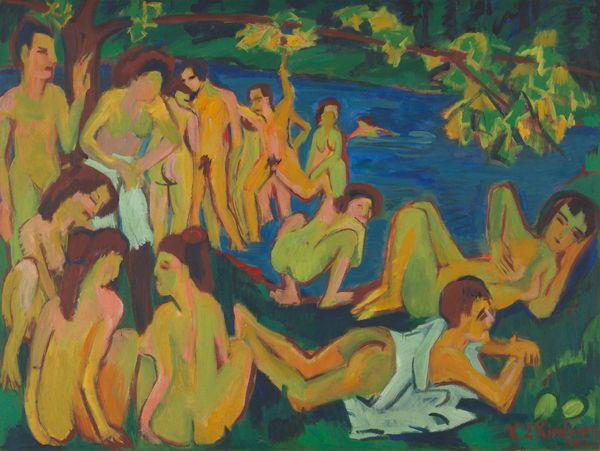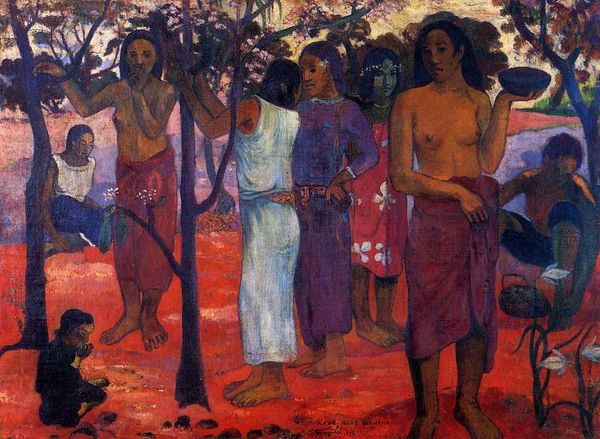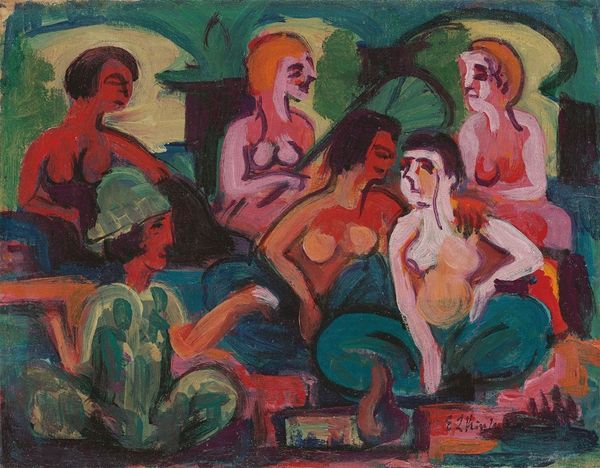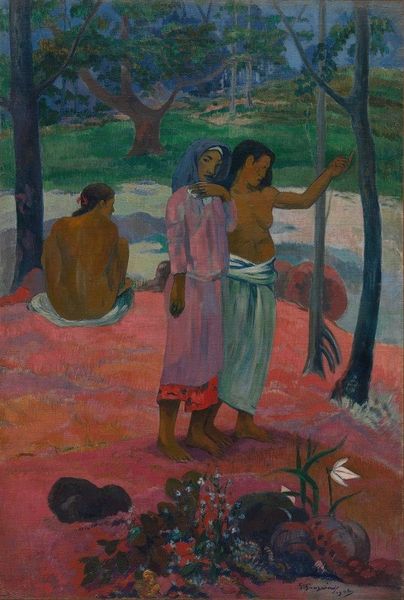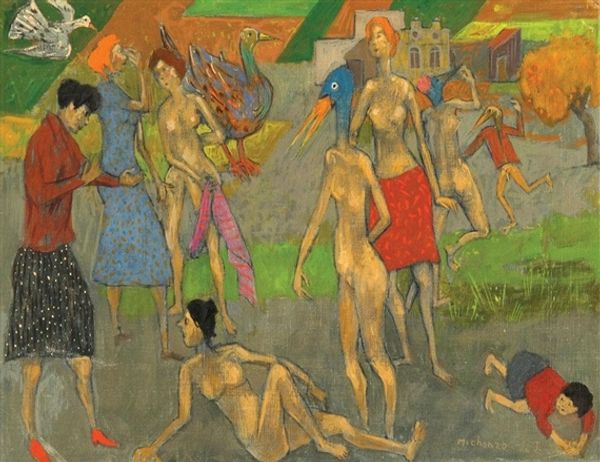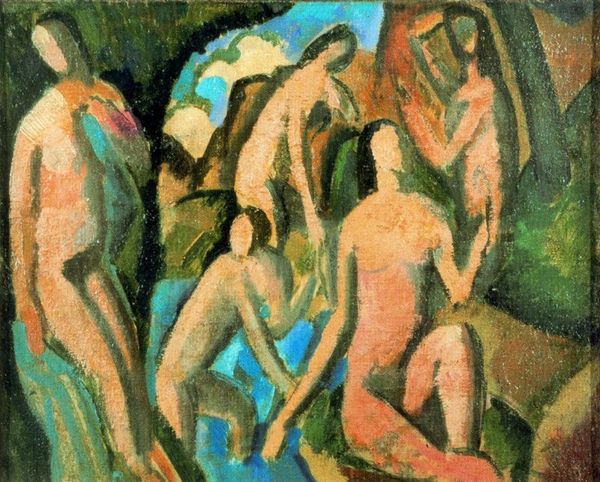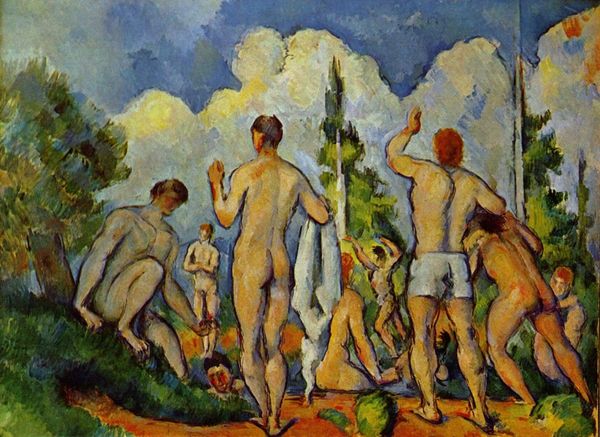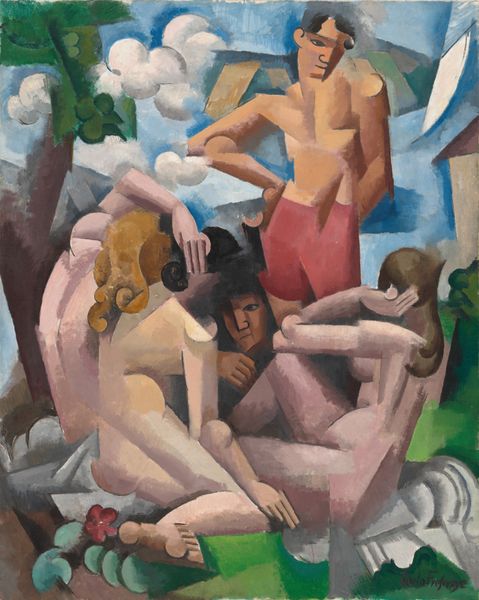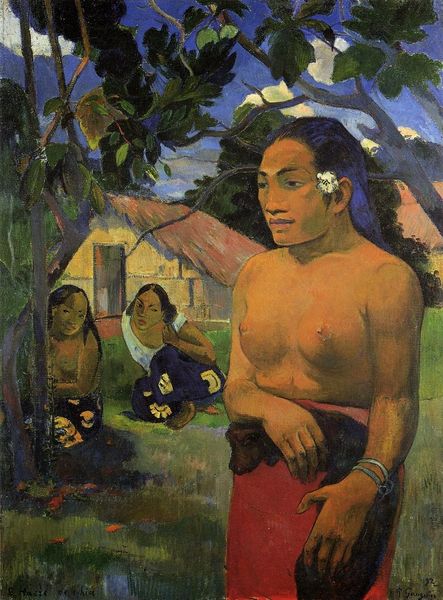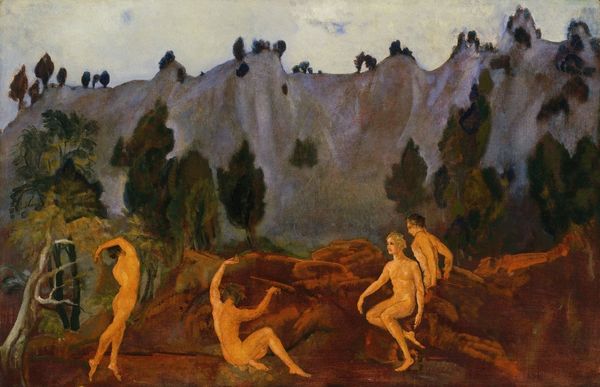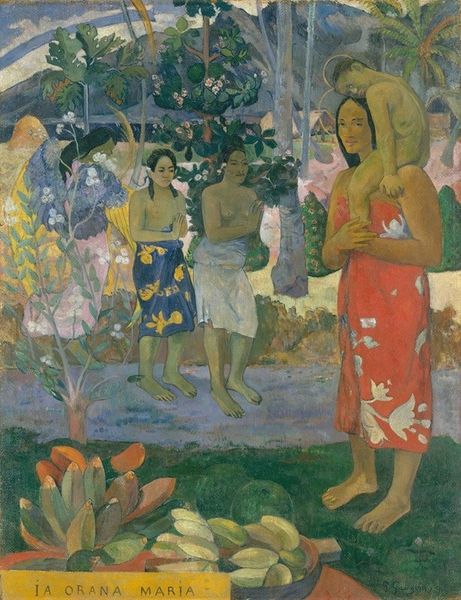
painting, oil-paint, impasto
#
figurative
#
narrative-art
#
painting
#
oil-paint
#
landscape
#
figuration
#
oil painting
#
impasto
#
orientalism
#
symbolism
#
post-impressionism
#
nude
Copyright: Public Domain: Artvee
Paul Gauguin painted this oil on canvas in 1892 during his first trip to Tahiti. He embraced the raw, direct application of paint, seen clearly in the heavy outlines and flat planes of color. Gauguin wanted his paintings to evoke something beyond mere representation. He sought inspiration from sources outside the European tradition, notably Japanese prints and what he perceived to be the “primitive” art of Oceania. By simplifying forms and heightening colors, he aimed to capture the spiritual essence of the Tahitian landscape and its people, using his materials as a vehicle to convey emotion and symbolism. Yet, it is important to remember that Gauguin’s vision was filtered through a colonial lens. While he believed he was escaping the artificiality of Western society, his work exoticized and romanticized Tahitian culture, reducing it to an aesthetic fantasy that ultimately says more about European desires than about the reality of life in Tahiti.
Comments
No comments
Be the first to comment and join the conversation on the ultimate creative platform.


